Ambisonics Sources
Ambisonic Stream sources are designed to receive audio encoded in a specific format. Unlike virtual sources, they do not represent a physical object in space; therefore they do not have any associated object in the Venue.
- A-Format (first order Ambisonics microphones)
- B-Format (first order Ambisconics streams)
- HOA Stream (higher order Ambisonics streams)
- Eigenmike® Microphone
- Zylia® Microphone
They all share similar parameters that are documented below.
Ambisonic Sources can only be routed to HOA 3D buses. They cannot be routed to HOA 2D buses, as Ambisonic Sources are all working in the 3D ambisonics domain.
However, you can route Virtual Sources to HOA 2D and 3D buses, to create an ambisonic synthesis workflow.
Common Parameters
The Header, Reverb tab, and Sends tab, are identical for all Ambisonic Sources.
Header Section
Ambisonic Sources all share the same Header settings documented in the Introduction for Sources: Gain, Mute, Solo.
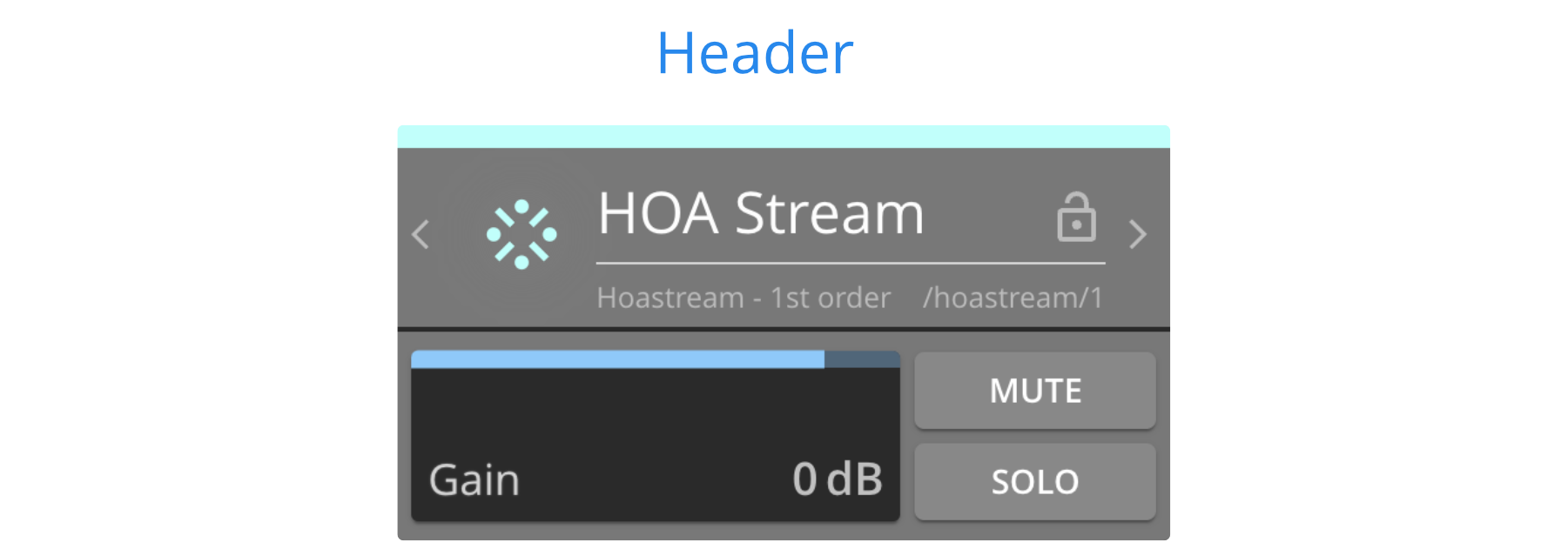
Reverb Tab
The Reverb Send level sends the W omnidirectional channel of the Ambisonic stream to the reverberation bus. You can choose to Mute it. Unlike Virtual Sources, there is no early and cluster simulation for Ambisonic Sources. You can learn more about it in the Reverberation section.

Sends Tab
This tab is identical for all Sources. Check the Dedicated Section to learn more about it.
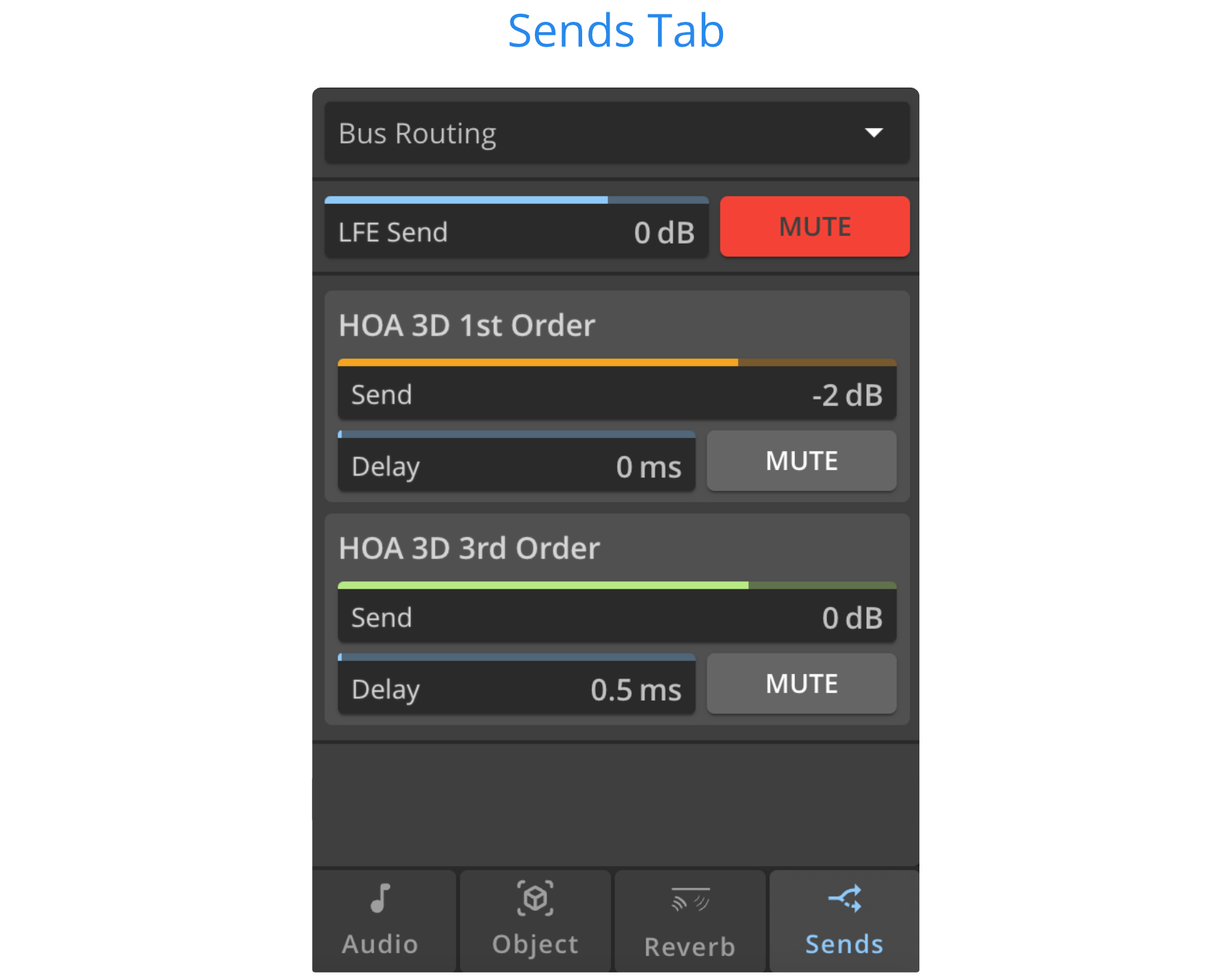
As previously stated in the Introduction, you can only route Ambisonic sources to HOA 3D buses (but not HOA 2D buses).
Audio Parameters
Like all Sources, all ambisonic Sources offer the Quick Routing | Input to Source, Trim, EQ, and Dynamics parameters in the Audio tab.
However, each Ambisonic Source type offers additional Audio tab parameters that are documented below.
A-Format
What is it?
A-Format sources allow to input in HOLOPHONIX the direct output stream of a 1st order Ambisonics microphone. Presets corresponding to the following microphones are available:
- Sennheiser Ambeo,
- SoundField ST250, ST450 and SPS200,
- RØDE NT-SF1,
- DPA-4
- Oktava MK-4012.
The A-Format stream is the signal coming out directly of the microphone capsules. If you have already transcoded that to a standard ambisonics stream using the manufacturer's software, use a B-Format source.
The A-Format stream will be automatically decoded to your loudspeaker layout by the chosen HOA bus.
For Higher Order microphones (i.e. with more than four microphone capsules), use the dedicated type of sources (Eigenmike®, Zylia®, and HOA Stream).
A-Format Parameters
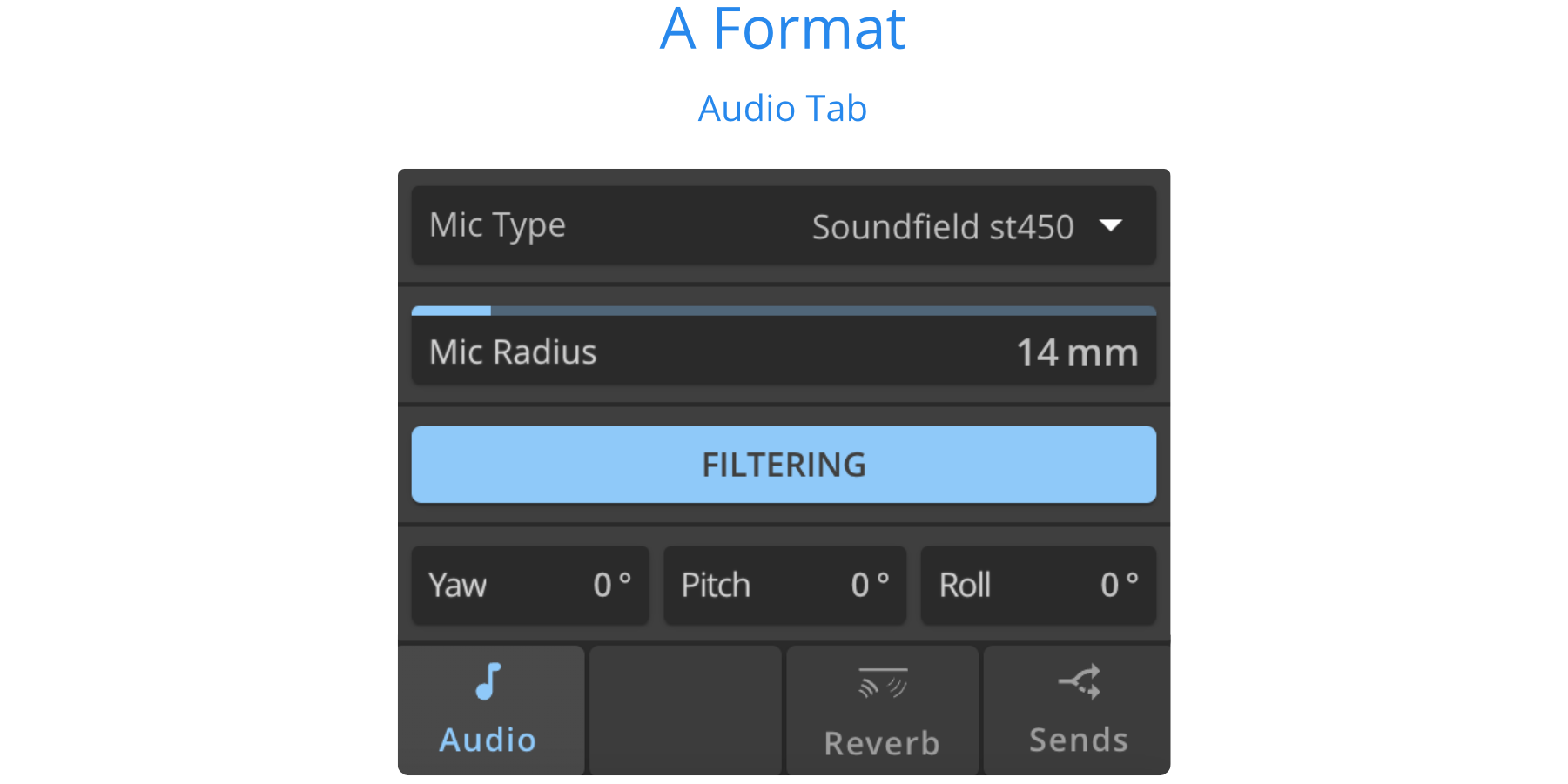
Mic Type
Choose the model corresponding to you microphone within the available presets. If your microphone is not in the list, use the manufacturer or a generic B-Format transcoder, and a B-Format source. You can also contact our user support to create the preset corresponding to your 1st order ambisonics microphone.
Mic Radius
The radius of the microphone is set automatically when selecting a microphone model. However, this parameter can be adjusted manually if necessary. The radius cannot be changed when filtering is off.
Filtering
The Filtering option activates high-frequency filters to compensate for the non-coincidence of the microphone capsules, and enhance the Ambisonic signal.
Orientation
The orientation of the A-Format stream can be adjusted with Yaw, Pitch, Roll, to rotate the entire audio scene. See rotation angles.
B-Format
What is it?
B-format sources allow inputting 1st order Ambisonics streams to HOLOPHONIX in virtually any formats. To input a Higher Order Ambisonic stream, use an HOA Stream source.
Configure the B-Format source to match the characteristics of the input stream with the B-Format section of the source inspector page.
B-Format Parameters

For AmbiX B-Format streams, choose ACN sorting and SN3D normalization.
Sorting
Select the sorting (or "channels ordering") of your B-Format incoming stream, between the standards listed below. Choosing the wrong sorting will cause incoherent levels and localization.
- ACN (wyzx)
- FMH (wxyz)
Normalization
Select the normalization matching with your B-Format Stream from one of the standards listed below. Choosing the wrong normalization will cause incoherent levels, distorted localisation, and can result in signal saturation.
- FuMa
- MaxN
- SN3D
Convention
The convention sets the orientation of the x-axis to the front or to the right. This adaptation equivalent to a 90° Yaw rotation.
- Classic where x is in front, is the most common convention.
- Spat where x on the right, is the convention used in Ircam's tools.
Orientation
The orientation of the B-Format stream can be adjusted with Yaw, Pitch, Roll, to rotate the entire audio scene. See rotation angles.
HOA Stream
What is it?
Much like B-format sources, the HOA Stream sources allow inputting High Order Ambisonics streams to HOLOPHONIX in a large diversity of formats. When creating the source, select the order of your stream. The HOA Stream source will be automatically created with the right number of audio channels.
Configure the HOA Stream source to match the characteristics of the input stream with the HOA Stream settings.
HOA Stream Parameters
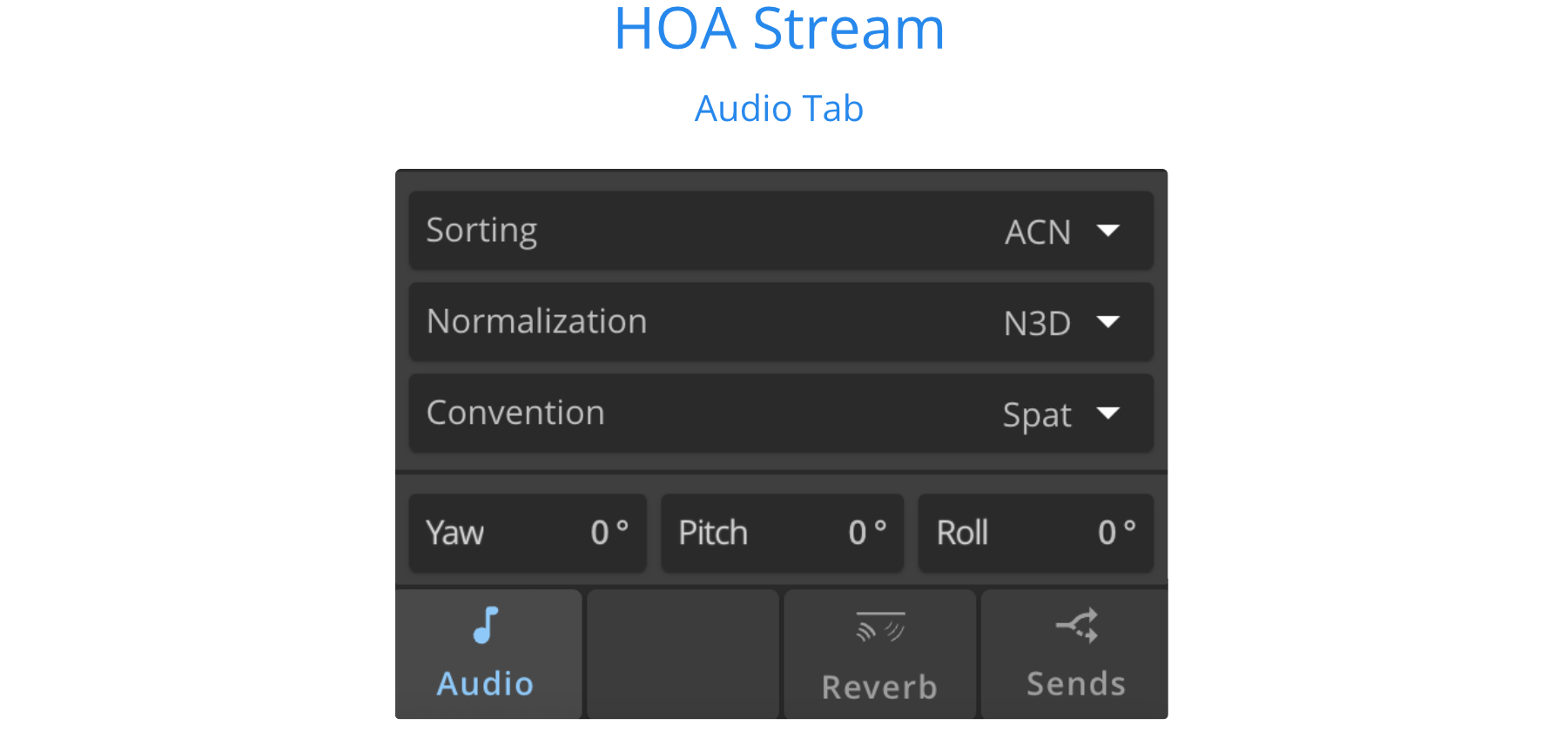
For AmbiX HOA Streams, choose ACN sorting and SN3D normalization.
Sorting
Select the sorting (or "channels ordering") of your incoming HOA Stream, between the standards listed below. Choosing the wrong sorting will cause incoherent levels and localization.
- ACN
- SID
- FMH
Normalization
Select the normalization matching with your HOA Stream from one of the standards listed below. Choosing the wrong normalization will cause incoherent levels, distorted localisation, and can result in signal saturation.
- FuMa
- MaxN
- N3D
- SN3D
Convention
The convention sets the orientation of the x-axis to the front or to the right. This adaptation equivalent to a 90° Yaw rotation.
- Classic where x is in front, is the most common convention.
- Spat where x on the right, is the convention used in Ircam's tools.
Orientation
The orientation of the B-Format stream can be adjusted with Yaw, Pitch, Roll, to rotate the entire audio scene. See rotation angles.
Eigenmike®
What is it?
Eigenmike sources allow inputting to HOLOPHONIX the direct output stream of the HOA microphone "Eigenmike® EM-32" from MH Acoustics.
Check the section below for parameters explanation.
If you already transcoded your Eigenmike recording to standard HOA stream, use an HOA Stream source to input the signal to HOLOPHONIX. Eigenmike sources are only intended to receive the 32-channel direct output of the microphone.
Eigenmike® Parameters
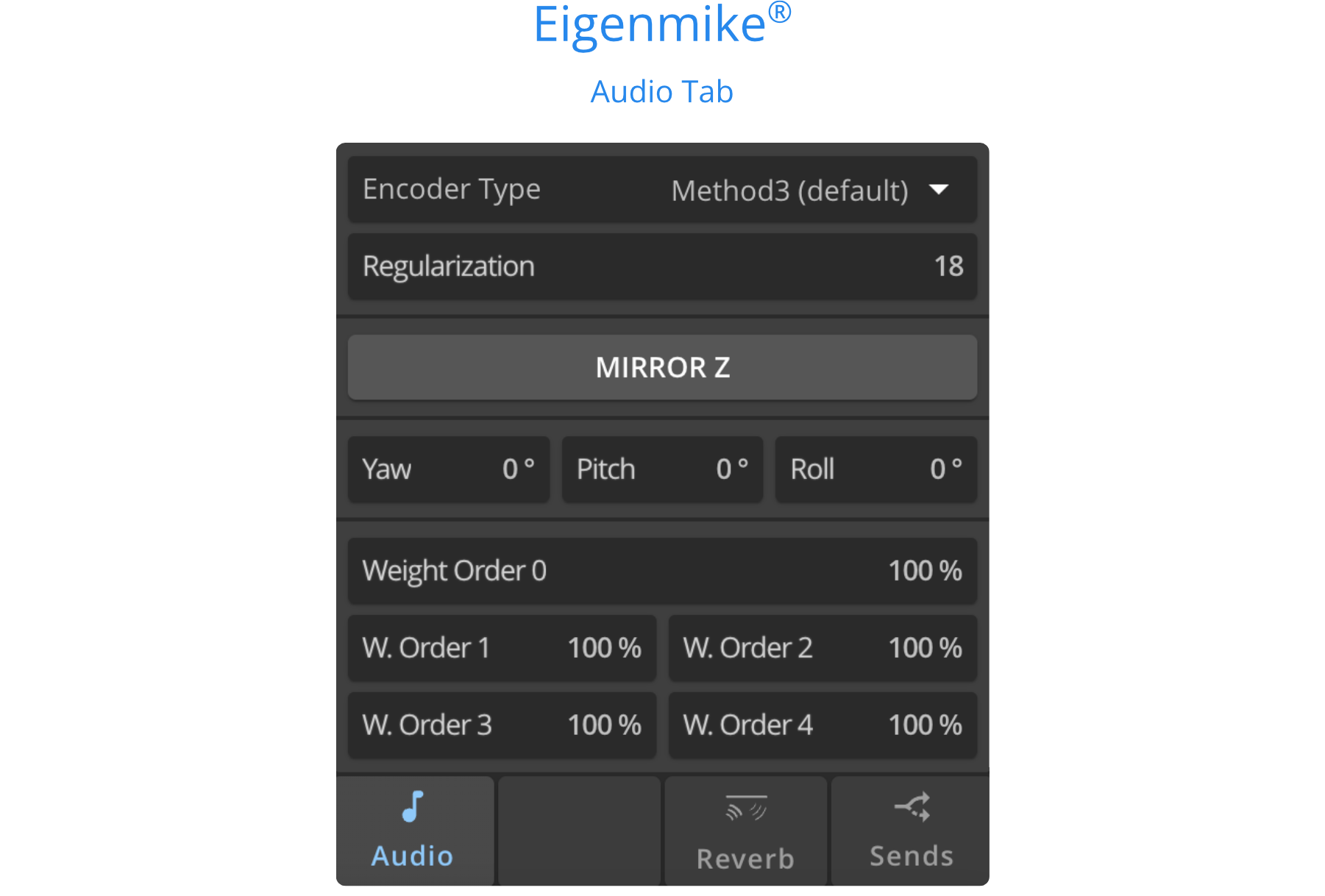
Encoder Type
Choose between the four HOA encoding methods. Each method corresponds to various techniques from the latest developments in scientific works concerning this specific task of transcoding audio signals coming from a microphone array, to a Higher Order Ambisonics stream.
EigenMike® 64 only offers Method 1 and Method 2
We recommend using Method 3 for EigenMike® 32.
Regularization
The regularization parameter aims at adapting the dynamics of the filters used to encode the microphone array to HOA. Changing its value will have an effect on the ratio between, on one hand, the precision of the localization, and on the other hand, the tone and timber quality, as well as the signal-to-noise ratio.
When changing the value, new filters will be computed. It requires a small calculation time.
This setting is on only available for Method 1 and Method 3.
Mirror Z
This setting applies mirroring along the Z axis.
Orientation
The orientation of the B-Format stream can be adjusted with Yaw, Pitch, Roll, to rotate the entire audio scene. See rotation angles.
HOA Orders
Use HOA Order to decrease the contribution of the components of each order in the encoded HOA stream.
Zylia®
What is it?
Zylia sources allow inputting to HOLOPHONIX the direct output stream of the HOA microphone "Zylia® ZM1". Check the section below for parameters explanation. If you already transcoded your Zylia recording to standard HOA stream, use an HOA Stream source to input the signal to HOLOPHONIX. Zylia sources are only intended to receive the direct output of the microphone.
Zylia® Parameters

Encoder Type
Choose between the four HOA encoding methods. Each method corresponds to various techniques from the latest developments in scientific works concerning this specific task of transcoding audio signals coming from a microphone array, to a Higher Order Ambisonics stream.
We recommend using Method 1.
Method 3 and Method 4 are very CPU intensive.Regularization
The 'REGULARIZATION' parameter aims at adapting the dynamics of the filters used to encode the microphone array to HOA. Changing its value will have an effect on the ratio between, on one hand, the precision of the localization, and on the other hand, the tone and timber quality, as well as the signal-to-noise ratio.
When changing the value, new filters will be computed. It requires a small calculation time.
This setting is on only available for Method 1.
Orientation
The orientation of the B-Format stream can be adjusted with Yaw, Pitch, Roll, to rotate the entire audio scene. See rotation angles.
HOA Orders
Use HOA Order to decrease the contribution of the components of each order in the encoded HOA stream.